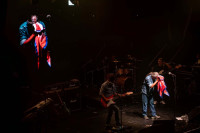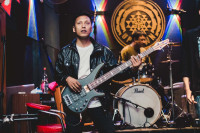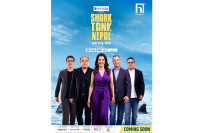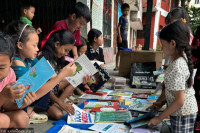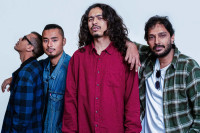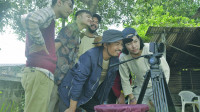Entertainment
Building bridges through art
Pakistani artist Sana Nasir was recently in Kathmandu to design and conduct a community mural workshop.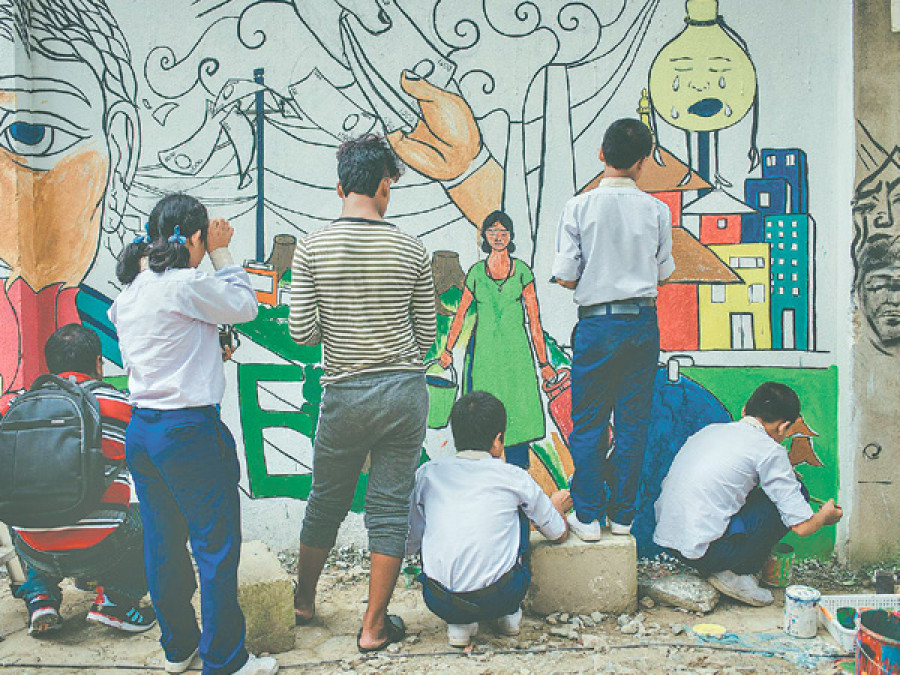
Pakistani artist Sana Nasir was recently in Kathmandu to design and conduct a community mural workshop. The workshop was, at its heart, a story-telling activity through the universal language of drawing and a means to channel the creative urges. The project culminated with the painting of new mural in Jawalakhel, the latest addition to an already colourful walls of Kathmandu. In this interview with the Post’s Kripa Shrestha, Nasir speaks about the project and how art can be a medium for social dialogue. Excerpts:
Please tell us about the inception of this project, how it all started.
I’ve been thinking that since there are so many tensions that we have to deal with and so few outlets to express them, colouring books have become an activity that adults enjoy. They are really great outlets to meditate and take time off to de-stress. And I thought, why not take it to the next level and invite everyone to colour? Doing that on a larger scale meant doing it, possibly, on a wall. So, the project, in essence, was a giant-sized colouring book. Anyone could come, pick up a brush and meditate by colouring with us.
What is at the core of this project? Whose involvement was pivotal to its realisation?
I worked with two groups of kids. The younger group was from Good Weave Nepal, which rescues child workers in carpet factories and educates them up to class 10, hoping to give them better lives. They came up with the typographic element of these letters that you see; every one of them is done by an individual child. Then,with me, students from Lalit Kala visualised what they would like Kathmandu or the world to see. On one side, they have illustrated each of their personal narratives that draw out the important issues and concerns of their local community such as load shedding, corruption, the devastation after the earthquake and the slow rebuilding process, lack of water, lack of gas, deforestation and other concerns. And on the other side, they have all the solutions, all the things that we can do to counter all the negative things that are happening. Here, they have illustrated their positive response to that; there is the concept of peace, renewable energy, education, loving animals, better healthcare and others.Believing in a better world and visualising it will help you actually create it. Visual cues make a huge impact on society. This is our way, their way, of telling everyone what they want to see.
Why Nepal? What brings you here?
I came here two years ago on a trip with some friends and I fell in love with the place. Nepal is such a beautiful country and there’s so much hope. After the earthquake, we were devastated.We wanted to find out ways in which we could help or come back or send tourists here. I wanted to come back but I didn’t want only to come back—I wanted to come and do something positive to help the country, as well as integrate myself with the culture and the people. I wanted to really get to know the real Nepal, not just from a tourist’s perspective, but an artist’s perspective as well. So, to help myself grow as an artist and to connect with other people as a human being, I decided I wanted to do something and looked up organisations that are similar to the one I’m working in in Karachi, which is called Peace Niche. We are a grassroot level organisation that value community space deeply and invite everyone to just come, speak, perform and create art. Sattya Media Arts Collective seemed to come very close to that. I got in touch with them and they asked me to come and design a workshop. And I thought, “Oh, great! I get to do this.” So yeah, that’s all it took. It took an email and I was here.
What are some observations you’ve made about Nepal and the Nepali artscape during your stay here?
One thing I would really like to get out there is how people have a very skewed perception of third-world countries. Nepal, however, counters that. When you think of third-world countries, you think of pollution, noise, congestion, which is fine, it happens here, but you also think of crime. And the crime rates here are so low. A girl can walk down the street unharmed. She can ride a scooter and no one looks her way. And that’s not something I’m used to back in Karachi. It is still a struggle for women to reclaim public spaces. And it’s just so heart-warming to come here and see that women are out there, they’re independent, they’re wearing saris, they’re riding scooters and picking up their children from school and it’s just so open and positive that way. And that gives me hope. I really want more people to come here, see this, experience the culture and meet the people—they’re just so warm. And I also feel like more people from Nepal and Pakistan need to connect with each other, both of these cultures have a lot to give each other. That’s also what I’m doing here. I’m networking and hoping more people become aware of the fact that there are people across borders who want to meet you, work with you, and to learn from you. I feel like Nepalis are such great, peaceful, warm, and kind-hearted people and I want the world to know that.




 7.12°C Kathmandu
7.12°C Kathmandu